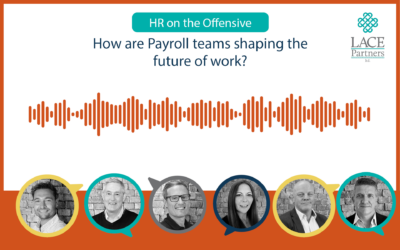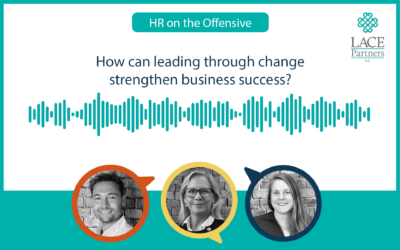In today’s fast-evolving workplace, organisations are looking for smarter ways to manage talent, align workforce strategies with business objectives, and leverage technology to stay ahead. As part of our Becoming skills-powered campaign Chris alongside LACE strategic workforce planning expert Becki Lovelady speak to Tom Shurrock VP of Product at Beamery. In this episode they unpack the strategies, challenges, and innovations shaping modern strategic workforce planning (SWP).
SWP is an approach that forecasts the skills needed to meet business outcomes, not just in moment but for the future. By looking ahead, you are able to evaluate the actions needed such as upskilling current workforce or hiring in new skills. They also discuss how Beamery’s AI-driven talent platform is transforming SWP, helping businesses build more agile, skills-based organisations that can navigate the complexities of the modern labour market.
What is AI’s role in strategic workforce planning?
AI and automation are transforming how companies attract, retain, and develop talent. Tom explains that these tools don’t just enhance efficiency; they unlock new possibilities for precision in hiring. Instead of relying on outdated job descriptions, businesses can harness AI-driven insights to understand what skills they need—not just today, but years down the line. This approach ensures companies remain agile, ready to adapt to market shifts and technological advancements.
Traditional workforce planning often focuses on immediate vacancies, but forward-thinking organisations are embracing a broader perspective—one that aligns talent acquisition with long-term business goals. By leveraging technology, businesses can analyse workforce trends, predict skills gaps, and make informed decisions that drive sustainable growth.
The best workforce strategies don’t just focus on external hiring; they cultivate talent from within. Organisations that invest in upskilling and reskilling programs create a culture of continuous learning, empowering employees to grow while filling crucial skill gaps. This not only improves retention but also futureproofs the business against talent shortages.
What challenges may arise when using a skills-based approach to strategic workforce planning?
A key challenge is breaking down silos between HR, leadership, and finance teams. Successful workforce planning requires collaboration across departments, ensuring that hiring strategies align with financial realities and broader business objectives.
Organisations that integrate workforce planning into their overall business strategy gain a competitive edge, as they can proactively adjust to industry changes rather than reactively scrambling to fill gaps.
The future of SWP is about being proactive, data-driven, and human-centric. Companies that invest in their people will not only navigate the complexities of the modern workforce but emerge as industry leaders. Listen now to learn how you can use a skills-based approach to refine your SWP.
You may be interested in:
- How to improve your data quality for business impact
- How are Payroll teams shaping the future of work?
- How can leading through change strengthen business success?
If you have questions about where to get started with your strategic workforce planning reach out below:






